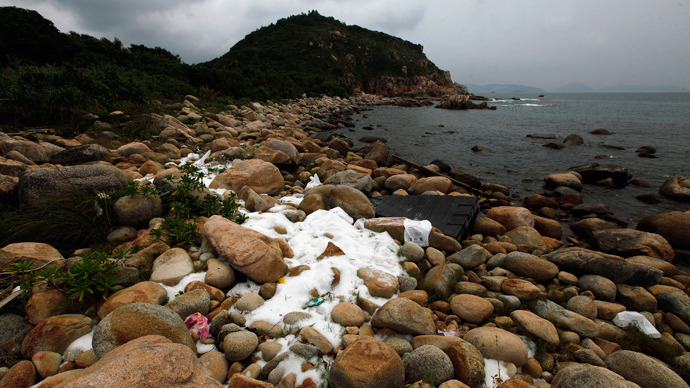China's coastal waters pollution doubles in just one year

China’s coastal waters are experiencing severe pollution, with the size of the worst affected areas up 50% on last year according to The State Oceanic Administration (SOA).
The SOA, found that 68,000 square kilometers (26,300 square miles) had the worst official pollution rating, up 24,000 square kilometers on 2011, it was reported by the China Daily Thursday.
Affected waters are deemed unsuitable for swimming, fish-farming, port use and are not even fit for some industrial purposes under this classification.
The SOA statement found that pollution from 72 monitored rivers increased by 17 million tonnes in 2012 and included 46,000 tonnes of heavy metals and 93,000 tonnes of oil. While discarded plastic rubbish accounted for 80% of pollution in coastal waters.
“The pollution of coastal waters and damage to the eco-system remained acute,” the statement read.
The SOA found that the impact on China’s estuaries, including the Yangtze and Pearl River deltas, which are huge centers of population and industry, were particularly badly affected. More than 80% of the coast of the Bohai Sea in northern China is built up with factories and other construction projects, while only 5% was still in a natural state.
The data reflects China’s rising environmental problems, which are a result of its rapid economic growth and booming economy and have sparked widespread public anger and protests.
China’s leaders have promised action on the country’s appalling pollution problems. Protests have reportedly grown by almost 30% a year since 1996.
The results of an eight year marine survey, some of which were revealed by the magazine Nature in November last year gave a disturbing picture of the overall marine environment in China.
China’s mangrove swamps have shrunk by 73% and coral reefs by 80% since the 1950’s, while coastal wetlands have declined by 57%.
It also revealed that over the past 20 years China’s coasts have suffered repeated harmful algae blooms. There has been an average of 83 ‘red tides’ a year, called thus because of the red pigment in the phytoplankton species.
‘Green tides’ of green algae occur mostly in the Yellow Sea, while ‘brown tides’, which kill shellfish, hit China in 2009.
As a result of the state of China’s coastal waters, some species of fish in the East China Sea are on the brink of extinction.
“There is an urgent need to set up a long-term monitoring network to access changes in coastal water chemistry and their impact on marine ecosystems,” Gao Kunshan, a marine ecologist, at Xiamen University, told Nature.














